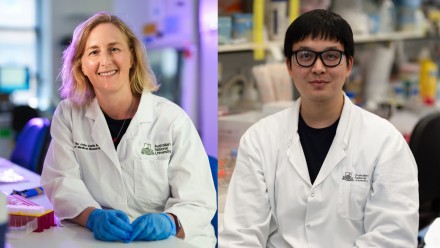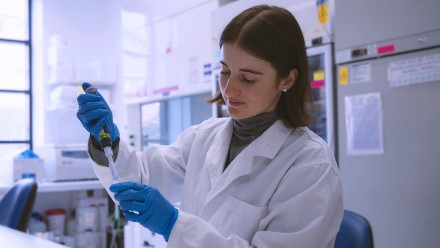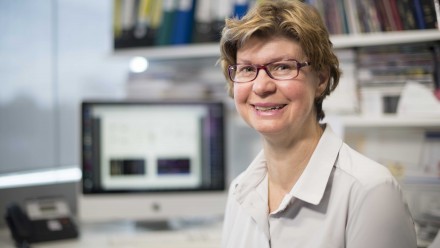Mapping cells in the mammary gland to understand breast cancer
Professor Jane Visvader, The Walter and Eliza Hall Institute of Medical Research, Melbourne, VIC
Breast tumours exhibit enormous heterogeneity at the histological and molecular levels and furthermore can manifest differently from tumour to tumour within the same breast cancer subtype. In order to understand this tumour variability and the cells-of-origin of breast cancer, our laboratory has focussed on mapping the epithelial cell hierarchy in mouse and human breast tissue. Using advanced cell lineage tracing combined with novel 3D imaging technology, we can track stem cells and their daughter cells through normal mammary gland development and in breast tumorigenesis. In BRCA1 mutation carriers (women at high risk of developing breast cancer), we have identified the likely cell-of-origin for basal-like cancers by studying the precancerous phase. Through careful analysis of the earliest cellular changes and pathways switched on in these cells, we recently identified a disrupted pathway that could be therapeutically targeted and is now being tested in a pilot clinical trial as a prevention therapy for women carrying a BRCA1 mutation.
Jane Visvader is Joint Head of the Division of Stem Cells and Cancer and the Breast Cancer Laboratory at The Walter and Eliza Hall Institute of Medical Research (WEHI). She carried out PhD studies at the University of Adelaide, and subsequent postdoctoral positions at the Salk Institute, San Diego, and the Children’s Hospital/Harvard Medical School, Boston, identifying transcription factors important for determining cell-fate in the haematopoietic system. In 1998, she transitioned to mammary gland development and breast cancer, as a Group Leader at WEHI. She was awarded a NHMRC Australia Fellowship in 2011, and elected a Fellow of the Australian Academy of Science in 2012. Visvader’s team has made important discoveries in the mammary gland field, including the: (1) prospective isolation of both mouse and human mammary stem cells; (2) identification of luminal progenitors as the ‘cell of origin’ in BRCA1 mutation carriers; (3) discovery that mammary stem cells are exquisitely sensitive to steroid hormones; (4) in vivo tracking of mammary stem and progenitor cells and (5) demonstration of the efficacy of patient-derived xenograft models as preclinical models for testing new therapeutic drug combinations in the treatment of breast cancer. Current efforts are directed towards understanding molecular heterogeneity in normal and cancerous tissue and identifying pathways that modulate their activity using a combination of transplantation and cell lineage tracing studies.












